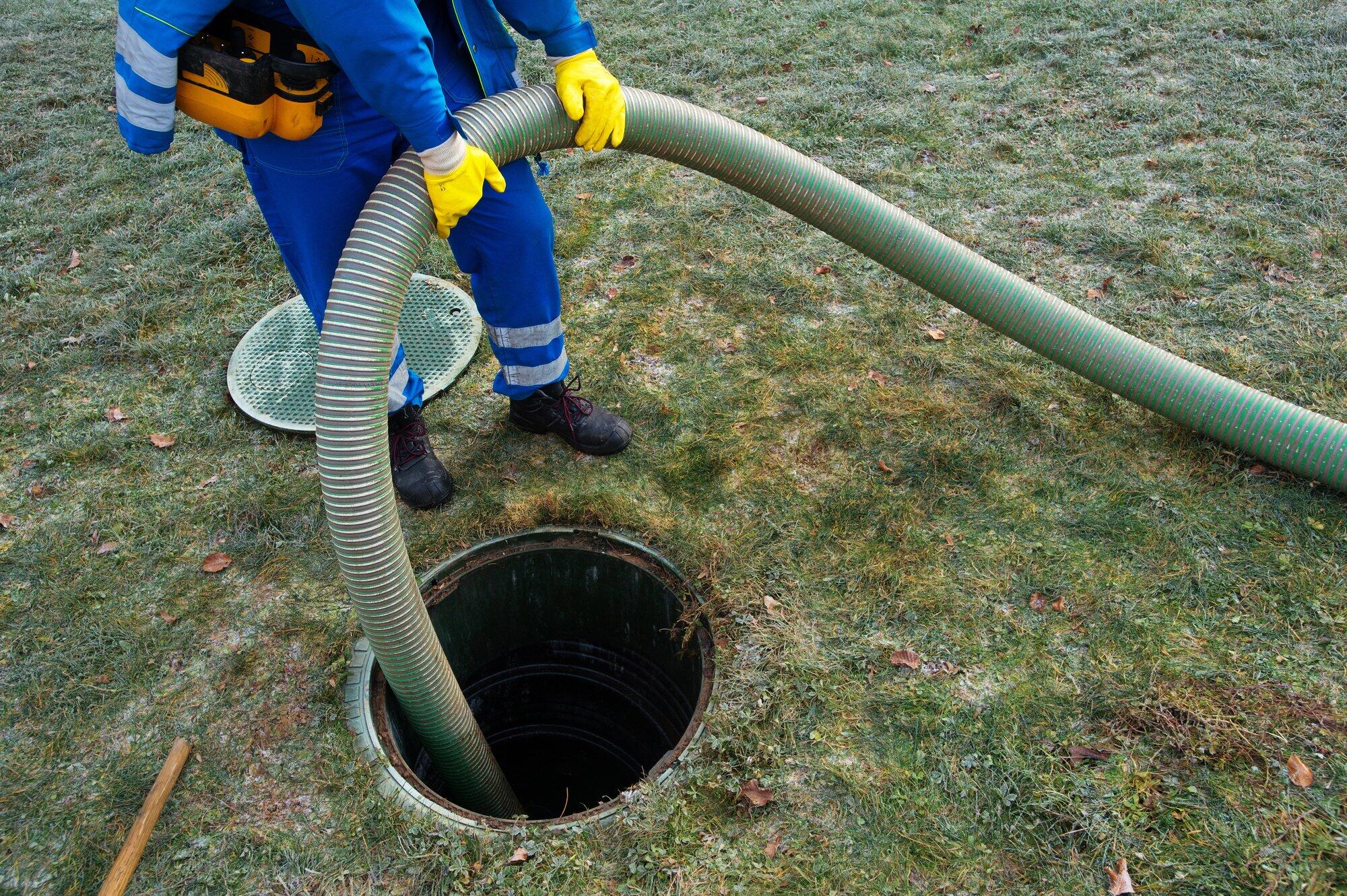Understanding the Septic Tank Drain Field Layout: Smooth Selling to Ease Minds
Are you preparing to sell your Memphis, Tennessee real estate? Understanding the septic tank drain field layout on your property could be the key to a smooth and successful sale.
When selling property, transparency is non-negotiable. And an important way to show your integrity is to help your potential buyer understand your property’s septic system. From distribution pipes to absorption trenches, every aspect plays a crucial role in the functionality of your septic tank.
We created an overview of what sellers need to know about sharing information on the septic system with buyers.
Your Septic Tank Drain Field Layout
Most homeowners know how to protect the drain field by not parking vehicles or planting trees and shrubs too close to or on top of it. Beyond that, the drain field is out of sight, so most people don’t know there’s a hidden network under their property quietly managing their home’s wastewater.
Firstly, there’s the septic tank itself. Typically crafted from robust materials like concrete or plastic, this tank is the initial holding area for wastewater. Within the tank, solids settle to the bottom while liquids flow out to the drain field.
Connected to the septic tank are distribution pipes, which are crucial for ensuring an even flow of liquid effluent. These pipes link the tank to the absorption trenches, distributing wastewater across the drain field for filtration.
Absorption trenches are the heart of the drain field. These trenches are long and often filled with gravel or other porous materials to help with the filtration process. As effluent seeps through the materials in the absorption trench, nature helps cleanse it.
How Does the Drain Field Work?
At its core, the drain field acts as a natural filtration system. It purifies wastewater before it reenters the groundwater. By dispersing effluent and allowing it to filter through the soil, the field breaks down harmful substances, leaving cleaner water behind.
Several factors can influence your drain field’s performance.
Soil type is critical. Clay-rich soils may hinder drainage. Sandy soils offer better filtration.
The land’s slope also matters, affecting drainage rates and runoff. Vegetation above the drain field can influence absorption rates and soil health.
Understanding the fundamental aspects of your septic tank drain field can help you and your prospective buyer. You will learn how to better maintain and safeguard your septic system, ensuring its longevity and effectiveness over time.
You pass the information on to the buyer, and they will enjoy the same benefits.
Providing Buyers With Educational Material
Educating potential buyers about your septic system can be incredibly valuable. It’s a great way to foster transparency and trust throughout the selling process.
Think of it as sharing a roadmap that guides buyers through the ins and outs of your septic system. So, what should you include in your information packet?
Consider including diagrams illustrating the layout and function of the system. Visual aids can enhance understanding of complex subjects.
Another aspect to cover is maintenance requirements. Outline the recommended maintenance schedule, including pumping intervals and inspection protocols.
This information gives buyers a clear understanding of what’s involved in caring for the septic system. It helps set realistic expectations.
Don’t forget to include inspection reports. This demonstrates proactive maintenance and gives buyers insight into the system’s condition. Document any repairs or maintenance performed on the system.
Clear Communication for Drain Field Clarity
Clear communication is key when selling a property with a septic system. The location and boundaries of the drain field are essential information your buyer needs.
Why is this so important?
The drain field is a critical component of the septic system. It filters and purifies wastewater. Communicating its location helps buyers better understand the property’s layout and limitations.
Knowing the location of the drain field is critical if buyers plan future construction or landscaping. They can avoid building over it or planting trees and shrubs that could interfere with its functionality.
Knowing where the drain field is can prevent costly mistakes in the future. Buyers can avoid accidentally damaging the system during renovations or landscaping activities.
Keep Your Maintenance Records
Maintaining meticulous records of past maintenance and inspections on your septic system is not just a good practice — it’s essential for instilling confidence in potential buyers.
Maintenance records prove you’ve cared for your septic system. For buyers, these records are priceless.
Good records assure buyers that the septic system has been properly maintained and is in good working condition. This can alleviate concerns about unexpected repairs or issues that may arise shortly after purchasing the property.
Armed with this information, buyers can make informed decisions about the property and budget accordingly for ongoing maintenance and care.
The Importance of Disclosure
Disclosing any known issues or concerns upfront isn’t just a courtesy — it’s a necessity. Not only does disclosure build trust, but it may also help you sell faster in today’s market.
Disclosure may also be your legal obligation as a seller.
By openly sharing information about the condition of the septic system, sellers empower buyers to make informed decisions about buying the property. Whether it’s a minor issue you’ve resolved or a more significant concern requiring attention, upfront disclosure prevents surprises.
Disclosing known issues demonstrates integrity and honesty, laying the foundation for a positive and mutually beneficial real estate transaction.
Help Buyers Understand the Environmental Impact
Septic drain fields play a vital role in the environmental impact of a septic system. They can have both negative and positive effects. Let’s look at the positives first.
The drain field is the final stage of treatment in a septic system. It’s where effluent from the septic tank drains through the soil for further filtration and purification.
Soil microorganisms in the drain field help to break down and remove pathogens, organic matter, and other contaminants from the wastewater. This improves water quality before it percolates into groundwater or surface water bodies.
As treated effluent from the drain field percolates through the soil, it helps replenish groundwater supplies. This process contributes to groundwater recharge. It’s critical for maintaining water levels in wells and sustaining ecosystems.
Potential Negative Impacts of a Septic Drain Field
You also want your buyer to understand what could happen when things go wrong in the septic drain field. Soil saturation, nutrient loading, and the risk of contamination are three potential negatives. Here’s a closer look:
Soil Saturation
Inadequately sized or poorly maintained drain fields can become saturated with wastewater. This leads to pooling or surfacing of effluent on the ground surface.
This can create odors, attract pests, and increase the risk of contamination of surface water or shallow groundwater.
Nutrient Loading
If effluent from the drain field contains high levels of nutrients, such as nitrogen and phosphorus, it can contribute to nutrient loading. Excessive nutrients can stimulate algal growth. This leads to water quality degradation and ecological imbalances.
Contamination Risks
In areas with shallow groundwater or porous soils, there is a higher risk of contamination from the drain field. That’s why septic system installers must follow proper setbacks and site suitability criteria.
Contaminants from the drain field, such as bacteria, viruses, and chemicals, can leach into groundwater. Contaminants pose risks to human health and the environment.
Factors That Drive Environmental Impacts
We’ve discussed the positive and negative impacts of septic systems and the drain field. Overall, the environmental impact of the septic drain field depends on several factors.
These factors include:
- Site conditions
- System design
- Maintenance practices
- Local regulations
Proper siting, sizing, and maintenance of drain fields minimize adverse environmental impacts.
A properly maintained septic system offers significant environmental benefits, making it an attractive feature for eco-conscious buyers. By effectively treating wastewater on-site, septic systems help reduce pollution and protect groundwater.
By investing in a property with a septic system, buyers reduce their environmental footprint and contribute to the overall health of the ecosystem.
Local Regulations and Septic Systems
Sellers must understand local regulations regarding septic systems and drain fields. Guidelines for selling Memphis, Tennessee, real estate may differ from those in other areas.
If you understand and can share this information with your buyer, it’s a great help. Remember, compliance helps avoid potential legal issues for both parties.
Familiarizing yourself with local regulations protects you today and your buyer tomorrow.
Seeking Professional Guidance
Sellers navigating the complexities of selling a property with a septic system can benefit from seeking professional guidance. Consider enlisting the expertise of a septic system inspector to provide valuable insights.
These professionals possess specialized knowledge and experience in all aspects of septic systems, from installation to maintenance and repair.
By consulting with a septic system expert, sellers can better understand their system’s condition. The septic system is part of any home inspection, so this is a great time to get ahead of the game.
Ready to Sell Your Memphis Property?
Transparency is vital when selling a house. Understanding the septic tank drain field layout helps sellers and buyers feel confident in the sales process.
If you’re ready to sell your property, reach out to We Buy Houses Memphis, your local real estate investor. We buy homes as-is for cash, simplifying the selling process for you.


